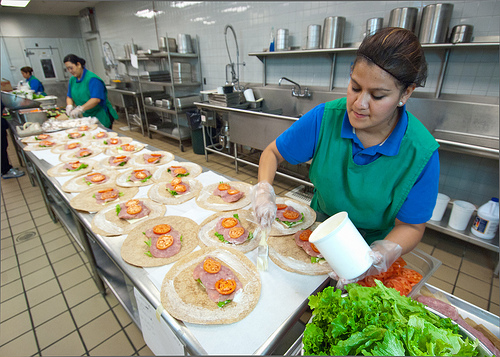Food insecurity rates in rural communities are typically comparable to urban and higher than suburban rates. The percentage of students who eat school lunch is higher in rural areas than urban ones (59% versus 47%). So when schools shuttered in March of 2020, more than 5 million rural students were left wondering where their next meal would come from.
To understand how rural school districts responded to the heightened threat of food insecurity during the 2019-2020 school year, we collected data on school food practices and policies from 50 rural districts’ websites, Facebook pages, and social media. Based on information posted on the web, we found:
- 97% of districts in our sample continued to provide meals during the closures. The majority provided lunch and breakfast for students. Many districts required families to pre-order meals, either by phone or online, for the following week.
- The frequency of meal service varied by district. Some served meals every day, while others provided meals only on certain days. Districts that provided meals on specific days of the week typically served multiple days’ worth of meals.
- Districts also varied in their approaches to meal distribution. Some districts offered meals for pick-up at a specified list of schools, while others delivered food along existing bus routes. Many combined approaches. A few districts offered community pick-up locations at local libraries and community centers.
- Communication on districts' websites, Facebook, and social media could be improved. Many rural districts included language on their websites indicating that children had to be present to pick up meals, despite the federal waiver. No districts in our sample published menus. And between mid- April and May, only two districts published information about either of the other two federal programs available to students: P-EBT and the “Meals to You” Program. No districts published information about P-EBT, and only two districts in our scan included information on the “Meals to You” Program, which may reflect how few districts successfully applied to the Program.
With so much uncertainty, districts are facing the unenviable task of determining how to feed students in the 2020-2021 school year. Food service directors are rallying staff, tweaking safety protocols, developing new menus for service in and out of school, and working to balance budgets depleted by emergency food service in the 2019-2020 school year. To ensure all rural students have access to healthy food this school year, we recommend:
- Congress pass universal school meals legislation.
- USDA publish strong guidance for P-EBT.
- USDA develop a strategic plan for school meal service in the 2020-2021 school year.
Click the link to access the brief on COVID-19 Closures and Rural School Meals.
